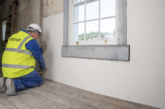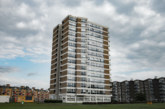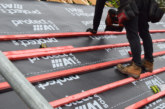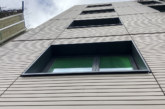Most people are familiar with the frustration that nuisance noise can cause, but what about the potentially harmful effects it can have on health and wellbeing? William Brown from Isover discusses why due consideration should be given to a property’s acoustic performance at the specification stage of a project.
Local authorities and housing associations owe a duty of care to their tenants, with one of the key responsibilities being to construct properties that provide a warm, dry and comfortable home. Installing high-quality insulation is crucial to fulfil this duty, as this plays a central role in the construction of a warm home.
Traditionally, the focus of domestic insulation has tended to be on its energy efficiency and heat retention. However, following an increased focus on health and wellbeing, similar significance is now being placed on the acoustic performance of a property and the ways in which insulation can improve this.
According to research carried out by Churchill Home Insurance, local councils receive on average 580,000 statutory nuisance complaints per year, of which almost half (48%) are noise related. From road traffic and aircraft to noisy neighbours and rowdy passers-by, it is easy for unwanted noise to disrupt the quiet comfort of our homes.
However, in addition to the general annoyance and disturbed nights’ sleep, nuisance noise can also have far more serious consequences, potentially causing hearing impairments, cardiovascular issues, cognitive impairment and metabolic effects, as well as resulting in decreased mental performance. As such, it is vital that local authorities recognise the danger of nuisance noise and ensure that they are providing tenants with well-insulated properties that possess both superior thermal and acoustic properties.
Most people will have experienced the nightmare of a noisy neighbour, whether it is the sound of voices, slamming doors, pounding music or the constant drone of a television. As such, one of the priority areas for local authorities to insulate is the party wall cavity between semi-detached and terraced houses. Fortunately, there is insulation available that is specifically designed for use within party walls, such as Isover RD Party Wall Roll for masonry and Timber Party Wall Roll for timber.
Designed to exceed the current Building Regulations for the transfer of sound by up to 5dB, RD Party Wall Roll can also deliver zero U-value thermal performance when effective edge sealing is implemented as part of a Robust Details construction.

Within larger multi-occupancy buildings, where residents live above, below and adjacent to one another, separating walls and floors between purpose built residential apartments are another area local authorities need to bear in mind. The potential for nuisance noise within this setting is understandably high, as sound can easily travel from room to room and between dwellings, especially without careful specification of the correct insulation. For separating walls within multi-occupancy buildings, local authorities should therefore consider solutions such as the GypWall Quiet SF Separating Wall specification.
Featuring Isover Acoustic Partition Roll (APR 1200) within the partition, this system enables specifiers to meet Building Regulations for airborne sound and maximise available space, as the complete system has a compact footprint of only 135mm.
Internal noise within a property can also be an issue, especially within flats or apartments where the traditional layout of living spaces and private rooms is not always possible — for example, the kitchen and living room could be located adjacent to the bedroom. Here, the Isover Acoustic Partition Roll (APR 1200) offers an ideal solution for internal walls, with excellent acoustic properties able to reduce the passage of unwanted sounds between rooms, such as a noisy washing machine or TV.
To demonstrate, the requirement for internal walls in new dwellings in England is 40 dB (Rw); using 25mm the Acoustic Partition Roll in a 70mm metal C stud partition, lined with a single layer of 12.5mm Gyproc Wallboard would comfortably meet this level of sound reduction. To further increase this level of performance, switching to 50mm in the stud zone with 15mm Soundbloc both sides would increase the overall reduction to 47 dB (Rw) – a highly perceivable reduction in the amount of sound energy passing through the partition.
It is clear that the industry’s view on insulation has evolved, leading to a stronger emphasis on both its thermal and acoustic properties — perhaps a result of society’s increased focus on our health and wellbeing. As such, it is important that local authorities and housing associations make every effort to fulfil their duty of care to tenants, offering properties that provide occupants with a quiet and comfortable environment to live in. Giving due consideration to a property’s acoustic performance at the specification stage will not only contribute to the happiness and wellbeing of current and future residents, but it could also help reduce the amount of time and resources that local councils currently spend dealing with noise complaints.









